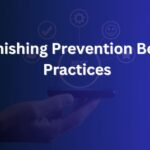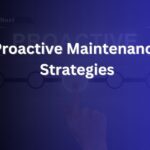If your dashboards feel “mostly right,” your machine learning models look promising in notebooks but falter in production, or your email campaigns keep bouncing to the wrong people, you don’t have a tooling problem—you have a data quality problem. Data cleaning sits at the very start of every reliable analytics or AI pipeline, yet it’s often skipped in the rush to modeling or visualization. This long-form guide explains what data cleaning is, why it matters more than ever, how to do it well at scale, and how to prove its ROI to any executive. You’ll get field-tested checklists, examples across industries, and realistic workflows you can adopt this week.
What Is Data Cleaning? A Clear, Plain-Language Definition
Data cleaning is the systematic process of detecting and correcting errors, inconsistencies, and irrelevancies in datasets so the information accurately represents reality. It includes standardizing formats, handling missing values, resolving duplicates, validating ranges and relationships, fixing structural errors, and annotating lineage so downstream users know what changed and why.
Data cleaning is not the same thing as data transformation or feature engineering. Cleaning makes the data correct and consistent; transformation makes it useful for a specific analysis or model. In practice, teams blend these steps, but keeping the distinction in mind helps you set crisp goals: first fix truth, then shape for purpose.
Why Data Cleaning Matters Right Now
Analytics Drives Decisions—And Bad Data Drives Bad Decisions
Business teams run pricing, demand, and risk decisions off dashboards; executives set strategy from monthly scorecards; product teams iterate based on cohort analyses and AB tests. If the underlying data is incomplete, duplicated, mis-keyed, or stale, the apparent “signal” is noise. That leads to wrong inventory levels, mistimed promotions, or misallocated budgets.
AI/ML Systems Are Only as Good as Inputs
Modern organizations lean on machine learning for forecasting, personalization, logistics, fraud detection, and support automation. Training on mislabeled, imbalanced, or contaminated datasets yields biased or brittle models. When those models feed real products, the cost of errors compounds—lost revenue, customer churn, compliance risk.
Regulatory and Customer Expectations Are Rising
Privacy regimes (GDPR, CCPA, sector rules like HIPAA/PCI) expect accuracy, minimization, and clear provenance. Clean, well-governed data reduces the likelihood of sending sensitive content to the wrong person, failing a subject access request, or making a consequential decision on outdated records.
Cloud Growth Means More Data—and More Mess
Every app, microservice, and vendor now emits events. Pipelines break, schemas evolve, and tracking plans drift. Volume, variety, and velocity multiply small problems into systemic ones. Structured, repeatable cleaning is your first defense.
What “Dirty Data” Looks Like in the Real World
Accuracy Errors
- Typos and transcription mistakes (e.g., order total 10,000 instead of 100.00).
- Wrong geocodes or time zones causing misaligned daily metrics.
- Misapplied units (kg vs lb) creating phantom anomalies.
Completeness Gaps
- Missing customer email or device IDs prevent lifecycle messaging and attribution.
- Sparse labels in a classification dataset force the model to infer from noise.
- Unreported cancellations or returns inflate revenue.
Consistency and Validity Issues
- Multiple date formats or character encodings corrupt joins and aggregations.
- Inconsistent categorical values (“CA,” “Calif,” “California”).
- Violated constraints (e.g., a subscription end date preceding its start date).
Uniqueness Problems
- Duplicate customer records split lifetime value calculations across IDs.
- Duplicate events inflate funnel conversion rates and trigger duplicate orders.
Timeliness and Lineage Lapses
- Data arriving days late makes “daily” dashboards stale.
- Unknown transformations make it impossible to trust the number on screen.
When these defects accumulate—even at low percentages—dashboards still render, models still train, and campaigns still send, but the organization slowly optimizes toward the wrong reality.
How Dirty Data Breaks Decision-Making
Analytics Drift
Executives react to swings caused by pipeline changes, not market changes. A re-mapped event or a silent schema update shifts metrics; the business chases phantom trends. With clean, validated data and tested schemas, you reduce false alarms and missed alarms alike.
Operational Drag
Engineers and analysts spend a third of their week untangling data issues instead of building new capabilities. Ad hoc fixes proliferate in hidden SQL, notebooks, and BI layer calculations, increasing tech debt.
Financial Waste
Storing, moving, and computing on junk data costs real money in cloud bills. Marketing sends to dupes, sales chases dead leads, and finance reconciles the same transactions twice.
Trust Erosion
Once stakeholders get burned by a wrong number, they stop trusting dashboards—and the team that owns them. Cleaning is not just technical hygiene; it’s the foundation of data credibility.
The ML/AI Angle: Why Data Cleaning Decides Model Quality
Bias and Representation
Under-representing key groups or over-sampling “easy” examples yields biased models. Cleaning includes auditing representation, balancing classes, and inspecting label accuracy so models learn the right patterns.
Label Noise and Leakage
Mislabeled samples and accidental inclusion of future information (data leakage) inflate offline scores and collapse in production. Cleaning adds label verification and rigorous train/validation/test splits that honor time and entity boundaries.
Outliers and Distribution Shifts
True outliers carry signal; recording errors carry noise. Cleaning targets the latter with rule-based filters, robust statistics, and domain review. It also monitors for covariate shift: when production data drifts away from training distributions, retraining and re-validation kick in.
Feature Hygiene
Datetime parsing, categorical standardization, text normalization, and unit alignment are cleaning steps that prevent subtle bugs in feature pipelines. In computer vision or audio, cleaning includes removing corrupted files, verifying frame rates, and normalizing sample rates.
As your team formalizes end-to-end quality, consider complementing data cleaning with rigorous model checks; a helpful primer is How to Test AI Applications and ML Software, which pairs naturally with dataset validation.
Data Quality Dimensions: The Checklist You Can Use
- Accuracy: Values reflect the real world.
- Completeness: Required fields and relationships are populated.
- Consistency: Same entities have the same representation across systems.
- Validity: Values obey formats, ranges, and business rules.
- Uniqueness: No unintended duplicates.
- Timeliness: Data arrives and updates within SLA.
- Integrity: Relationships across tables are preserved.
- Lineage: You can trace every number to its sources and transformations.
Each dimension should map to automated tests, SLAs, and owners.
Where Dirty Data Comes From (Root Causes and How to Spot Them)
Human Entry and Process Issues
- Free-text fields with no validation; manual CSV uploads.
- Inconsistent onboarding scripts across regions or teams.
Countermeasures: Input constraints, dropdowns, address/phone/email validation, role-specific training, and periodic form audits.
Schema Evolution and Integration Mismatch
- Vendors rename fields; data teams change column types without notice.
Countermeasures: Data contracts (explicit schemas with versioning), backward-compatible changes, and integration tests on every commit.
Tracking Plan Drift
- Product teams ship events with changed names or properties; analytics silently breaks.
Countermeasures: Event catalogs, linters in CI for analytics SDKs, and automated schema checks.
Scraping and Ingestion Artifacts
- Encoding issues, hidden whitespace, HTML leftovers, or OCR misreads.
Countermeasures: Normalization libraries, strict parsing, and canary rows for quick sanity checks.
IoT and Sensor Drift
- Miscalibrated sensors, clock skew, intermittent connectivity.
Countermeasures: Timestamp reconciliation, device health metrics, and drift detection.
Timezone/Calendar Confusion
- “Day” boundaries change per locale; daylight saving hits daily cohorts.
Countermeasures: Store timestamps in UTC, display in local time, and standardize period roll-ups.
PII/Compliance Gaps
- Free-text notes storing sensitive data in the wrong systems.
Countermeasures: PII detection and redaction, field-level encryption, and data minimization.
A Practical, Repeatable Data Cleaning Workflow
1) Profile Before You Change Anything
Run column-level statistics: distinct counts, null ratios, min/max, pattern frequency (e.g., regex match rates), and join keys’ uniqueness. Visualize distributions and correlation heatmaps. Profiling turns “I think” into “I know.”
2) Define Rules as Code
Translate business logic into machine-checkable tests: “order_total ≥ 0,” “country in ISO-3166,” “if status = ‘refunded’ then refund_timestamp not null.” Store tests in the same repository as your transformations so they version together.
3) Standardize at the Edges
Normalize encodings, trim whitespace, unify case, parse datetimes, collapse synonyms (US/USA/United States), and harmonize units. The aim is canonical forms before aggregation.
4) Handle Missingness Deliberately
- When to impute: non-critical numeric fields with stable distributions.
- When to default: booleans or enums with meaningful defaults.
- When to drop: high-impact fields with too much missingness to trust.
- When to escalate: critical business fields (e.g., consent flags) that should never be missing.
5) De-Duplicate with Entity Resolution
Use deterministic rules (exact matches on stable IDs) and probabilistic matching (fuzzy names + addresses + phones) to collapse duplicates. Track confidence scores and maintain a golden record with survivorship rules.
6) Detect and Treat Anomalies
Combine simple thresholds, robust Z-scores, isolation forests, or seasonal decomposition to spot numeric outliers and volume spikes/drops. Review statistically, then confirm with domain experts.
7) Validate Relationships
Check foreign keys, one-to-one constraints, and business relationships (e.g., each invoice must belong to an existing customer). Validate referential integrity across systems.
8) Document Lineage and Decisions
Every cleaning step should be traceable: what rule fired, what value changed, who approved the rule, and when. Push metadata to a catalog so downstream users see context in BI tools.
9) Reconcile End-to-End
Pick invariants (e.g., revenue totals, counts of active subscriptions) and reconcile across sources and stages. Reconciliation prevents “fixed here, broken there” outcomes.
10) Promote and Monitor
Only promote data to the “trusted” zone when it passes tests. Add continuous monitors for row counts, nulls, and distribution drift; alert owners when thresholds breach.
Tooling That Helps (From Lightweight to Enterprise)
- Profiling and exploration: notebook stacks (Python/R), SQL with window functions, and visual profilers.
- Data validation frameworks: expectations-based testing in your ELT/ETL (for example, rule-driven checks that run in CI and production).
- Workflow orchestration: pipelines with dependency graphs, retries, and SLAs.
- Metadata and catalogs: searchable lineage, ownership, and docs integrated into BI.
- ML data checks: schema validators for model inputs and training/serving skew detection.
- Ad hoc cleaning: spreadsheet tools or dedicated data wranglers for one-off projects—use sparingly and document outputs.
Tools are enablers. The core assets are your rules, your tests, and your discipline in keeping them versioned, reviewed, and monitored.
Governance, People, and Process: Who Owns Data Quality?
Roles
- Data Owners: accountable for domains (e.g., finance, product).
- Data Stewards: define rules and resolve exceptions.
- Platform/SRE for Data: keep pipelines reliable and observe quality SLAs.
- Analysts/Scientists: contribute tests tied to metrics and models.
Data Contracts
A contract specifies schemas, semantics, and SLAs between producers and consumers. When a producer changes a field, the contract enforces versioning or blocks the deploy until tests pass. Contracts move data quality from “best effort” to “engineering discipline.”
Change Management
Use pull requests for transformation changes, code owners for reviews, and automated test gates. Communicate breaking changes ahead of time in a shared changelog.
Quantifying ROI: Prove Cleaning Pays for Itself
Direct Impact Metrics
- Lift in model accuracy/precision/recall after cleaning.
- Reduction in dashboard corrections and ad hoc “fix SQL” requests.
- Fewer support tickets tied to wrong data (e.g., duplicate bills).
- Lower cloud spend from pruning junk tables and redundant pipelines.
Financial Translation
- Email deliverability and CTR improvements → pipeline revenue.
- Fraud model false positive reduction → agent time saved and customer satisfaction.
- Inventory forecast error reduction → fewer stockouts and markdowns.
Track before/after baselines for at least one quarter; those charts close budgets.
Industry Examples: What “Clean vs Dirty” Looks Like in Practice
Retail and eCommerce
- Dirty: duplicate SKUs, mismatched variants, and inconsistent tax rules inflate stock counts and trigger wrong promos.
- Clean: canonical product catalogs, standardized attributes, and fused customer identities improve recommendations and returns forecasting.
Healthcare
- Dirty: inconsistent patient identifiers across EMR systems; free-text diagnoses; incomplete vitals.
- Clean: master patient index, controlled vocabularies, and strict validation reduce readmission prediction error and improve clinical decision support.
Financial Services
- Dirty: duplicate transactions, delayed exchange rates, and ambiguous merchant codes.
- Clean: reconciled ledgers, validated FX, and merchant normalization improve risk scoring and regulatory reporting.
SaaS and B2B
- Dirty: CRM dupes split account history; undefined lifecycle stages skew conversion rates.
- Clean: entity resolution and standardized stages make pipeline forecasts believable and customer success playbooks effective.
Manufacturing and IoT
- Dirty: sensor drift and timestamp jitter mislead predictive maintenance models.
- Clean: calibration, time alignment, and outlier treatment cut false alarms and downtime.
Common Myths About Data Cleaning (And the Reality)
- “We’ll clean later when we scale.” Later never arrives; defects compound. Start small, automate, and iterate.
- “Cleaning is a one-time project.” It’s continuous. Data, products, and schemas evolve. So must your rules.
- “More data beats better data.” Volume cannot compensate for systemic bias or invalid records.
- “Dashboards look fine, so the data must be fine.” Visual smoothness can hide structural defects; trust tests and reconciliations, not vibes.
Advanced Topics: Beyond the Basics
Entity Resolution at Scale
Move past exact matches with probabilistic and graph-based methods (e.g., name + address + phone weighted matches). Use active learning with human-in-the-loop for ambiguous cases; store match provenance for audits.
Drift and Anomaly Monitoring
Treat data like an SLO: define acceptable ranges for freshness, volume, and distribution. Alert early and route incidents with ownership and runbooks.
Privacy-Aware Cleaning
Scan for PII in free text, logs, and data lakes. Redact, tokenize, or encrypt where appropriate. Cleaning includes removing sensitive content from places it shouldn’t live.
Real-Time Streams
For streaming pipelines, push validation to the edge: reject or quarantine malformed events before they poison downstream systems. Keep a dead-letter queue for inspection and replay.
A 30/60/90-Day Data Cleaning Plan
Days 1–30: Baseline and Quick Wins
- Profile your top 3 revenue-critical tables.
- Add a dozen high-value tests (nulls, ranges, referential integrity).
- Standardize 3 painful fields (dates, country codes, currency).
- Stand up daily quality reports to Slack/Teams.
Days 31–60: Stabilize and Automate
- Introduce data contracts for two producer systems.
- Implement de-duplication for customers or leads; unify identities.
- Add drift monitors on core KPIs; document lineage in a catalog.
- Start a weekly data quality triage with owners.
Days 61–90: Scale and Measure ROI
- Expand tests to secondary domains (marketing, support).
- Tie quality improvements to model lift and campaign performance.
- Prune or archive low-value tables to cut storage/compute.
- Publish a quarterly data quality scorecard to leadership.
A Compact Data Cleaning Checklist
- Profile new sources: nulls, distincts, ranges, patterns.
- Write rules as code: formats, ranges, dependencies, uniqueness.
- Standardize formats and units at ingestion.
- Decide missingness strategies per field (impute, default, drop, escalate).
- Resolve duplicates with entity resolution and survivorship rules.
- Validate relationships and reconcile end-to-end totals.
- Capture lineage and decisions; surface them in catalogs and BI.
- Monitor freshness, volume, and distribution drift with alerts.
- Review rules quarterly; retire obsolete ones and add new ones with schema changes.
Conclusion
Every high-leverage analytics or AI success story starts with clean data. Data cleaning is the multiplier that turns storage into insight, models into product value, and dashboards into decisions leadership can trust. It is not housekeeping; it is infrastructure. When you codify rules, automate tests, reconcile totals, and make quality visible, you replace reactivity with reliability. Your analysts spend more time asking better questions, your scientists ship models that hold up in the wild, and your business runs on numbers everyone believes. That is why data cleaning is important—and why, in 2025, it belongs at the very center of your data strategy.
FAQ’s
What is the main purpose of data cleaning?
To make data accurate, consistent, timely, and trustworthy so decisions, analytics, and models reflect reality rather than defects.
How often should data be cleaned?
Continuously. New records arrive daily; schemas evolve weekly; models retrain monthly. Automate tests and monitors so cleaning is “always on.”
Does data cleaning improve AI and machine learning?
Yes. Clean labels, balanced classes, valid ranges, and stable distributions drastically improve generalization and reduce surprises in production.
Is data cleaning the same as data preprocessing?
Cleaning is a subset. Preprocessing also includes transformations like scaling, encoding, and feature creation tailored to a model or analysis.







